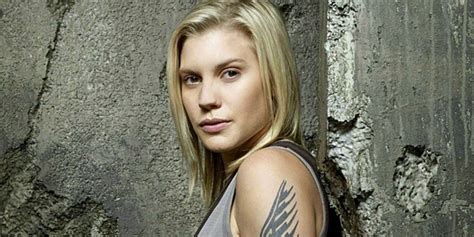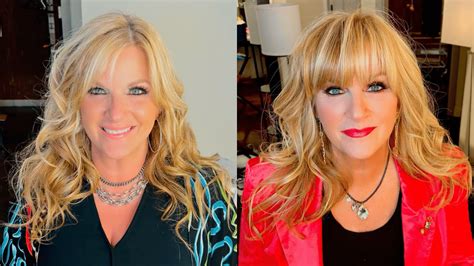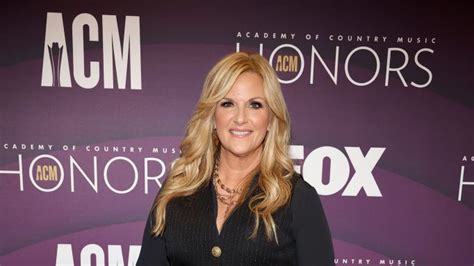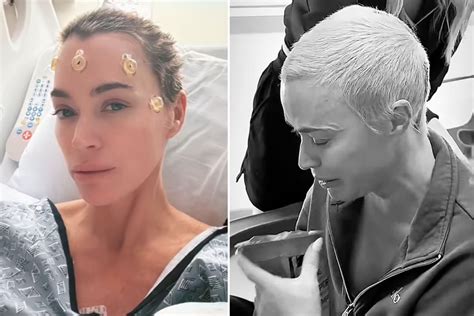
Katee Sackhoff, best known for her role as Starbuck in “Battlestar Galactica,” recently revealed she suffered a panic attack severe enough to warrant a trip to the emergency room while in post-production for her upcoming film, “O.” The actress disclosed that the intense pressure and stress surrounding the completion of the project triggered the episode.
Sackhoff shared the details of her experience in a recent interview, explaining that the incident occurred during the final stages of editing and production for “O,” a project she not only starred in but also produced. The multi-faceted role, coupled with external pressures, culminated in a severe anxiety attack. “I ended up in the ER because I had a panic attack that I didn’t realize was a panic attack,” Sackhoff stated. “I’m producing my first movie, I’m starring in it, I’m dealing with so much stuff, and all of a sudden, I’m in the ER.”
The actress noted that the experience was a wake-up call, highlighting the importance of recognizing and managing stress and anxiety, especially when juggling multiple responsibilities. Sackhoff hopes that by sharing her story, she can help others recognize the signs of a panic attack and seek help when needed.
The pressure of balancing her acting responsibilities with the added stress of producing “O” seemingly became overwhelming. Sackhoff described the experience as intensely demanding, requiring her to manage various aspects of the film’s creation, from creative decisions to logistical challenges. This multi-faceted role put her under considerable strain, ultimately leading to the panic attack.
Sackhoff also discussed the importance of self-care and mental health awareness in the entertainment industry. She hopes that by sharing her personal experience, she can encourage others to prioritize their well-being and seek help when needed. She expressed concern about the stigma surrounding mental health and wants to contribute to creating a more open and supportive environment for those struggling with anxiety and other mental health challenges.
The actress emphasized that recognizing the signs of a panic attack is crucial. Symptoms can include a racing heart, shortness of breath, dizziness, sweating, trembling, and a feeling of impending doom. Sackhoff admitted that she initially mistook her panic attack for a physical ailment, which delayed her seeking appropriate medical attention. This highlights the importance of being aware of both the physical and psychological symptoms of anxiety and panic disorders.
Sackhoff’s revelation underscores the broader issue of mental health challenges faced by individuals in high-pressure industries like entertainment. The long hours, intense scrutiny, and constant demands can take a toll on one’s mental and emotional well-being. Her willingness to speak openly about her experience is a step towards destigmatizing mental health issues and encouraging others to seek help.
“O” is an upcoming film project produced by and starring Sackhoff. While details about the plot remain relatively sparse, the film is clearly a significant undertaking for the actress, representing a major step in her career as she takes on more responsibilities behind the camera. The stress of bringing this project to fruition evidently played a significant role in triggering her panic attack.
Sackhoff’s career spans various successful television shows and movies, making her a recognizable figure in the entertainment industry. Her role as Kara “Starbuck” Thrace in the reimagined “Battlestar Galactica” garnered critical acclaim and established her as a prominent actress in the science fiction genre. She has since appeared in other notable projects, including “Longmire,” “Riddick,” and “The Mandalorian,” further solidifying her presence in the industry.
The actress’s decision to venture into producing with “O” demonstrates her ambition and desire to expand her creative involvement in filmmaking. However, as her experience shows, taking on additional responsibilities can also bring added stress and pressure. Sackhoff’s story serves as a reminder that even successful and accomplished individuals can struggle with mental health challenges and that seeking help is a sign of strength, not weakness.
In addition to her acting and producing work, Sackhoff is also known for her advocacy for various causes, including mental health awareness. Her openness about her own struggles with anxiety and panic attacks aligns with her commitment to raising awareness and promoting understanding of mental health issues. She hopes that by sharing her story, she can inspire others to prioritize their well-being and seek support when needed.
The incident also brings to light the demanding nature of independent filmmaking. Independent productions often operate with limited resources and tight deadlines, placing immense pressure on everyone involved, including actors who take on producing roles to have greater creative control.
Sackhoff’s experience highlights the importance of studios and production companies prioritizing mental health resources for their cast and crew. Providing access to therapists, counselors, and other mental health professionals can help individuals cope with the stresses of the industry and prevent situations like the one Sackhoff experienced.
The actress’ revelation also encourages a broader conversation about work-life balance, particularly in demanding professions. It underscores the need for individuals to set boundaries, prioritize self-care, and seek support when feeling overwhelmed.
Sackhoff’s experience is a poignant reminder that mental health is just as important as physical health and should be treated with the same level of care and attention. By sharing her story, she is helping to break down the stigma surrounding mental health and encouraging others to seek help when they need it. Her openness and vulnerability are commendable and serve as an inspiration to others who may be struggling with similar challenges.
Her journey also provides valuable insights for aspiring filmmakers and producers. It underscores the importance of understanding the potential stressors involved in producing a film and taking proactive steps to manage those stressors. This includes building a strong support network, delegating tasks effectively, and prioritizing self-care.
Sackhoff’s experience serves as a powerful reminder that success in the entertainment industry does not come without its challenges. It highlights the importance of mental health awareness and self-care, not just for those in the industry, but for everyone. Her willingness to share her story is a testament to her strength and resilience, and it is sure to resonate with many who have faced similar struggles.
The incident also prompts consideration of the support systems available within the entertainment industry. While resources exist, their accessibility and utilization may vary. Further efforts to enhance awareness and availability of mental health support are crucial for fostering a healthier and more sustainable environment for those working in film and television.
Sackhoff’s narrative encourages open dialogue within the industry and beyond, challenging the notion that success equates to invincibility. It humanizes the experiences of those in the public eye and underscores the shared vulnerability that connects us all. By normalizing conversations about mental health, Sackhoff contributes to creating a more compassionate and understanding society.
The focus on Sackhoff’s experience should also lead to a discussion on the responsibility of media outlets in portraying mental health issues accurately and sensitively. Avoiding sensationalism and providing balanced and informative coverage can contribute to reducing stigma and promoting help-seeking behavior.
Sackhoff’s story also emphasizes the importance of early intervention in mental health crises. Recognizing the signs of a panic attack or anxiety disorder and seeking help promptly can prevent escalation and improve outcomes. Education and awareness campaigns can play a vital role in empowering individuals to take proactive steps to protect their mental well-being.
Sackhoff’s experience further underscores the need for comprehensive mental health services that address the unique challenges faced by individuals in high-pressure environments. This includes providing access to specialized therapy, stress management techniques, and support groups tailored to the specific needs of those working in the entertainment industry.
Sackhoff’s openness is not only beneficial for those in the entertainment industry, but also for anyone struggling with stress and anxiety. Her story serves as a reminder that it is okay to ask for help and that seeking support is a sign of strength, not weakness.
The episode highlights the significance of cultivating resilience and coping mechanisms to navigate challenging situations. Developing strategies for managing stress, such as exercise, mindfulness, or spending time with loved ones, can help individuals build their capacity to withstand pressure and maintain their mental well-being.
Sackhoff’s experience serves as a catalyst for promoting a culture of empathy and understanding within the entertainment industry and beyond. Creating a supportive environment where individuals feel comfortable sharing their struggles and seeking help can contribute to reducing stigma and fostering a sense of community.
The actress’ story underscores the importance of self-awareness in recognizing and addressing mental health challenges. Paying attention to one’s emotions, identifying triggers, and seeking professional help when needed are crucial steps in managing anxiety and maintaining overall well-being.
Sackhoff’s willingness to speak openly about her experience is a powerful example of leadership and advocacy. By sharing her story, she is inspiring others to prioritize their mental health and seek support when they need it. Her courage and vulnerability are commendable and serve as an inspiration to us all.
Frequently Asked Questions (FAQ)
-
What triggered Katee Sackhoff’s panic attack?
Katee Sackhoff’s panic attack was triggered by the intense pressure and stress she experienced while in post-production for her upcoming film, “O.” She was not only starring in the movie but also producing it, leading to a significant increase in her responsibilities and stress levels. According to Sackhoff, “I’m producing my first movie, I’m starring in it, I’m dealing with so much stuff, and all of a sudden, I’m in the ER.”
-
What were the symptoms of Katee Sackhoff’s panic attack?
While the specific symptoms Sackhoff experienced are not detailed explicitly in the article, she mentioned ending up in the emergency room. Generally, symptoms of a panic attack can include a racing heart, shortness of breath, dizziness, sweating, trembling, and a feeling of impending doom. She also noted that she initially mistook her panic attack for a physical ailment, indicating that she may have experienced physical symptoms that she did not immediately recognize as anxiety-related.
-
Why is Katee Sackhoff sharing her story?
Sackhoff is sharing her story to raise awareness about mental health, particularly anxiety and panic attacks. She hopes to destigmatize mental health issues and encourage others to recognize the signs of a panic attack and seek help when needed. By being open about her experience, she aims to create a more supportive environment for those struggling with similar challenges and to emphasize the importance of self-care and mental health awareness in high-pressure industries like entertainment.
-
What is “O,” the film Katee Sackhoff was working on when she had the panic attack?
“O” is an upcoming film that Katee Sackhoff is producing and starring in. While specific details about the plot are limited, the project represents a significant step in her career as she takes on more responsibilities behind the camera. The stress associated with bringing this project to fruition appears to have contributed to her panic attack.
-
What is Katee Sackhoff known for?
Katee Sackhoff is best known for her role as Kara “Starbuck” Thrace in the reimagined “Battlestar Galactica.” She has also appeared in other notable projects, including “Longmire,” “Riddick,” and “The Mandalorian,” establishing herself as a prominent actress in the science fiction and entertainment industries. She is also recognized for her advocacy for various causes, including mental health awareness.
-
What does this incident reveal about the entertainment industry?
This incident underscores the intense pressures and demands placed on individuals in the entertainment industry, including actors, producers, and other creatives. Long hours, constant scrutiny, and the need to balance multiple responsibilities can take a toll on mental and emotional well-being. The incident also highlights the importance of studios and production companies prioritizing mental health resources for their cast and crew.
-
What steps can be taken to prevent similar incidents in the future?
To prevent similar incidents, it’s crucial for individuals in high-pressure environments to prioritize self-care, set boundaries, and seek support when feeling overwhelmed. Studios and production companies should provide access to mental health professionals and create a supportive environment where individuals feel comfortable sharing their struggles and seeking help. Education and awareness campaigns can also play a vital role in empowering individuals to take proactive steps to protect their mental well-being.
-
How can someone distinguish between a panic attack and a physical ailment?
Distinguishing between a panic attack and a physical ailment can be challenging, as many symptoms overlap. However, panic attacks often involve a combination of physical and psychological symptoms, such as a racing heart, shortness of breath, dizziness, sweating, trembling, and a feeling of impending doom. If you are unsure, it’s always best to seek medical advice to rule out any underlying physical conditions.
-
What resources are available for individuals experiencing panic attacks or anxiety disorders?
There are numerous resources available for individuals experiencing panic attacks or anxiety disorders. These include:
- Mental health professionals, such as therapists and counselors.
- Support groups and online communities.
- Crisis hotlines and mental health organizations.
- Self-help books and online resources.
- Medical professionals who can provide medication if necessary.
-
How can friends and family support someone experiencing a panic attack?
Friends and family can support someone experiencing a panic attack by:
- Staying calm and reassuring.
- Helping them to find a quiet and comfortable place.
- Encouraging them to breathe deeply and slowly.
- Reminding them that the panic attack will pass.
- Encouraging them to seek professional help if the panic attacks are frequent or severe.
-
How does Katee Sackhoff’s experience impact the perception of success in the entertainment industry?
Katee Sackhoff’s experience challenges the notion that success in the entertainment industry equates to invincibility. It humanizes the experiences of those in the public eye and underscores the shared vulnerability that connects us all. By normalizing conversations about mental health, Sackhoff contributes to creating a more compassionate and understanding society.
-
What is the role of media outlets in covering mental health issues like panic attacks?
Media outlets have a responsibility to portray mental health issues accurately and sensitively. Avoiding sensationalism and providing balanced and informative coverage can contribute to reducing stigma and promoting help-seeking behavior.
-
What are the long-term effects of experiencing a panic attack?
The long-term effects of experiencing a panic attack can vary. Some individuals may experience occasional panic attacks without developing any long-term issues. However, others may develop panic disorder, characterized by frequent and unexpected panic attacks, as well as persistent worry about having future attacks. Untreated panic disorder can lead to significant impairment in daily functioning and may increase the risk of other mental health problems.
-
What is the connection between stress and panic attacks?
Stress is a significant contributing factor to panic attacks. When individuals experience high levels of stress, their bodies release stress hormones, such as cortisol and adrenaline, which can trigger a cascade of physiological changes that can lead to a panic attack. Managing stress through techniques like exercise, mindfulness, and relaxation can help reduce the risk of panic attacks.
-
How does Katee Sackhoff’s advocacy for mental health align with her other work?
Katee Sackhoff’s advocacy for mental health aligns with her commitment to raising awareness and promoting understanding of various social issues. By using her platform to speak openly about her own struggles with anxiety and panic attacks, she is able to reach a wider audience and inspire others to prioritize their mental well-being.
-
What is the significance of discussing mental health in the workplace, especially in demanding industries?
Discussing mental health in the workplace, especially in demanding industries like entertainment, is crucial for creating a supportive and inclusive environment. It helps to reduce stigma, promote help-seeking behavior, and encourage employers to prioritize the well-being of their employees.
-
How can individuals build resilience to cope with stress and anxiety?
Individuals can build resilience to cope with stress and anxiety by:
- Developing strong social support networks.
- Practicing self-care, such as exercise, mindfulness, and relaxation.
- Setting realistic goals and expectations.
- Learning to manage stress effectively.
- Seeking professional help when needed.
-
What is the role of self-awareness in managing mental health challenges?
Self-awareness is crucial in managing mental health challenges. Paying attention to one’s emotions, identifying triggers, and recognizing signs of distress are essential steps in seeking help and developing coping strategies.
-
How can the entertainment industry foster a more supportive environment for mental health?
The entertainment industry can foster a more supportive environment for mental health by:
- Providing access to mental health professionals.
- Creating a culture of open communication and support.
- Reducing stigma and promoting help-seeking behavior.
- Prioritizing work-life balance.
- Implementing policies and practices that support the well-being of cast and crew.
-
What message does Katee Sackhoff’s experience convey to others struggling with mental health?
Katee Sackhoff’s experience conveys the message that it is okay to ask for help and that seeking support is a sign of strength, not weakness. Her willingness to share her story is a testament to her courage and resilience, and it is sure to resonate with many who have faced similar struggles.









